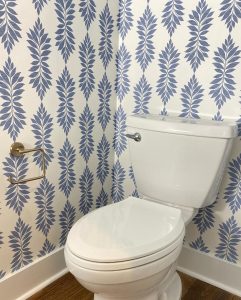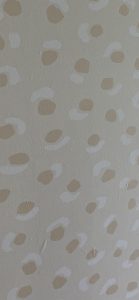Wallpaper Pasting Methods
When deciding which pasting method to use, it is always best to refer to your specific wallpaper manufacturer’s instructions/recommendations. You will typically either have to paste the wall or paste the paper.
In some cases, you may want to decide one technique over the other so that it will be an easier install. For example, when wallpapering a ceiling, it may be easier to paste the wall.
The three main types of wallpaper
There are three main types of wallpaper in today’s market.
- Unpasted (also known as non-pasted or traditional),
- pre-pasted, and
- peel-and-stick.
Unpasted wallpaper will require the installer to either paste the back of the wallpaper or paste the wall. Pre-pasted material will require water rolled on to the back of the material or even sprayed on (your wallpaper will typically come with instructions that will specify the water applying method).
Peel-and-stick paper is the “modern” type as it allows the installer to stick the paper on the wall without having to use any paste or water to activate the adhesive. This method is advertised to be DIY friendly, but can actually be a tough task to complete specially when wallpapering more than one wall. This is because without the paste or water, it can be tough to smooth out any air bubbles trapped underneath your paper.


